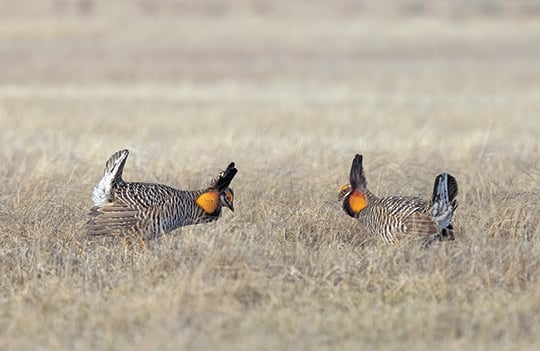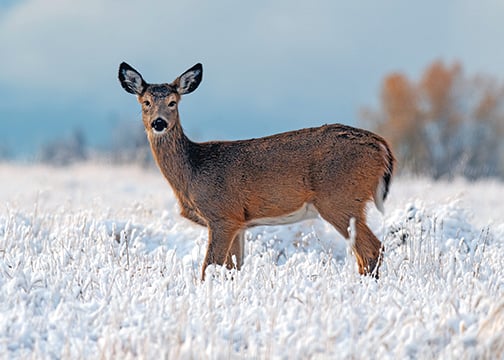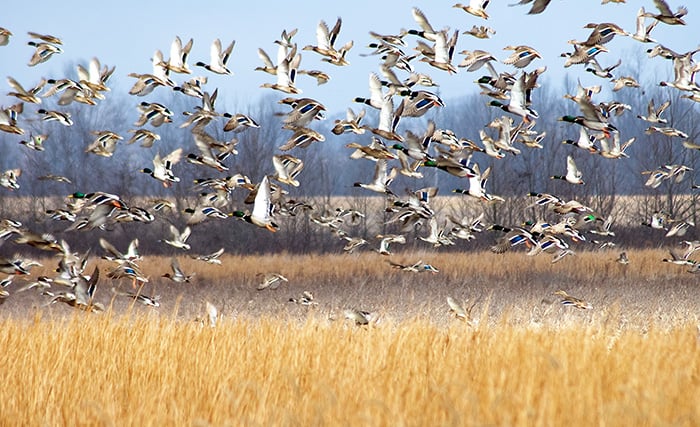Minnesota Mixed Bag: Minnesota Pollution Control Agency seeks volunteers to monitor state waters – Outdoor News

St. Paul — With the arrival of spring, the Minnesota Pollution Control Agency is kicking off its Volunteer Water Monitoring Program, which relies on volunteers to monitor the state’s 12,000-plus lakes and 92,000-plus miles of streams.
The MPCA currently is recruiting volunteers to measure water clarity in many of those lakes and streams, including at several high-priority locations in the Twin Cities metro area. Findings from volunteers are then reported back to the MPCA.
The University of Minnesota launched the program in 1973. Five years later it became the purview of the MPCA. Volunteers now conduct a simple water-clarity test of a designated water twice a month from April through September. Training and equipment are provided.
To volunteer for the program, visit: www.pca.state.mn.us/get-engaged/volunteer-water-monitoring to sign up.
MORE COVERAGE FROM MINNESOTA OUTDOOR NEWS:
Minnesota’s walleye egg take on time, on target in 2024
USFWS says lake sturgeon not endangered, allowing state management to continue
Minnesota’s Environment and Natural Resources Trust Fund renewal to be on state ballot in November
DNR: REPORT FISH DIE-OFFS
St. Paul — The Minnesota DNR encourages Minnesotans to contact the state duty officer if they see evidence of a fish die-off in a lake or stream. Fish die-offs can result from a variety of natural and human causes.
To report fish die-offs, people should call (651) 649-5451. The duty officer line is staffed 24 hours per day, seven days a week. An early report facilitates timely water and fish sampling or other response actions, if needed. It’s especially helpful to know what sizes and types of fish people see in a fish die-off.
More information on fish die-offs is available on the Minnesota DNR website.
ZEBRA MUSSELS CONFIRMED IN CLAY COUNTY’S LEE LAKE
St. Paul — The Minnesota DNR has confirmed the presence of zebra mussels in Lee Lake, near the city of Hawley in Clay County.
A lake property owner contacted the DNR after noticing zebra mussels along the shoreline and attached to a rock. A DNR invasive species specialist found adult zebra mussels on a dock at the Lee Lake public water access and at a second location about three-quarters of a mile from the public water access.
Whether or not a lake has any invasive species, Minnesota law requires people to:
People should contact a Minnesota DNR aquatic invasive species specialist if they think they have found zebra mussels or any other invasive species that was not already known to be in the water body.
More information is available on the aquatic invasive species webpage of the DNR website.
THE NATURE CONSERVANCY, DNR STREAM GREATER PRAIRIE CHICKENS BOOMING
St. Paul — The Minnesota DNR has placed a livestreaming camera at The Nature Conservancy’s Bluestem Prairie Preserve in Clay County to showcase the sights and sounds of greater prairie chickens’ annual mating behavior, known as booming.
To watch the livestream, go to nature.org/minnesota and click on the link under “Latest News.”
At dawn, male prairie chickens venture to a short-grass patch in the prairie known as a lek, where they perform an intricate courtship display where they hop, strut, flap their wings, fill their vibrant orange air sacs, and make a low booming sound. The displaying birds may even spar with other males, all for the attention of females.
Prairie chickens were once abundant across the Great Plains. Today, there are only about 360,000 living in small pockets of grassland like TNC’s Bluestem Prairie, which is one of the largest and highest quality remaining northern tallgrass prairies.
The Nature Conservancy, Minnesota DNR, and U.S. Fish and Wildlife Service all have viewing blinds available for the public to reserve. Information on how to reserve a blind can be found at www.prairiechickens.org/how-to-view
TC WALLEYES TO HOST NEUSTROM
Bloomington, Minn. — Twin Cities Walleyes Unlimited will host Tom Neustrom at its club meeting May 2. Neustrom is a respected and productive fishing guide and a promoter of the fishing industry with 35 years of experience.
When he’s not on the water, Neustrom spends much of his time conducting fishing seminars, writing articles, doing in-store promotions, attending Minnesota DNR meetings, and working with the MN-FISH Sportfishing Foundation and Coalition in an effort to share his fishing expertise with others.
In 2009, Neustrom was inducted as a “Legendary Guide” into the National Fresh Water Fishing Hall of Fame in Hayward, Wis. He was inducted into the Minnesota Fishing Hall of Fame in 2015. He has been appointed to the Minnesota DNR Fishing Roundtable, Red Lake Advisory Council, and the State Walleye Advisory Committee.
Visit www.tcwalleyes.com for more information.
WALLEYE SEASON OPENS MAY 4 ON IOWA’S GREAT LAKES
Des Moines, Iowa — The 148th walleye-fishing season officially opens May 4 for Spirit Lake, and East and West Okoboji lakes. The protected slot for walleyes is 19 to 25 inches, with only one walleye over 25 inches allowed per day. The protected slot applies to Upper and Lower Gar lakes, and Minnewashta Lake, as well. The daily limit is three walleyes with a possession limit of six.
For many anglers, this will be their first trip on the water this season. Check your safety equipment and make sure your boat is ready ahead of time.







